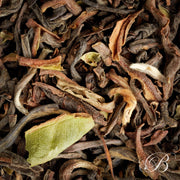Founded in 1860, Margaret's Hope is one of Darjeeling's most iconic tea plantations. You have to climb the hills of Kurseong, high in the misty Darjeeling mountains, to discover a garden with a singular name: Margaret's Hope. There, suspended between sky and valley, the tea rows undulate at an altitude of over 1,800 meters. Behind this delicate name lies a story of love and loss.
At the beginning of the 20th century, the estate was still called Bara Ringtong. One day, the owner's daughter at the time, Margaret, accompanied her father to these mountains. She fell in love with the endless landscapes, the light filtering through the mists, and the women gracefully picking tea. She promised to return. But fate intervened: Margaret died at sea on the return journey. Her heartbroken father renamed the garden "Margaret's Hope."
Even today, this name lingers in the morning air like a whisper. The garden is renowned worldwide for its Second Flush teas, black teas harvested in the heart of summer, prized for their muscatel notes, their dominant ripe yellow fruit aromas, and their great aromatic finesse.
The tea plants are primarily of old China varieties, rooted on these steep slopes for over a century. The estate covers more than 500 hectares. Cultivation still takes place using traditional methods, and the community that lives there (tea pickers, artisans, families) participates in educational and social programs developed over several decades.
Margaret's Hope is more than just a garden. It's a place suspended between memory and matter, between British tradition and Indian know-how. A tea that tells a story, and a cup that takes you on a journey.




